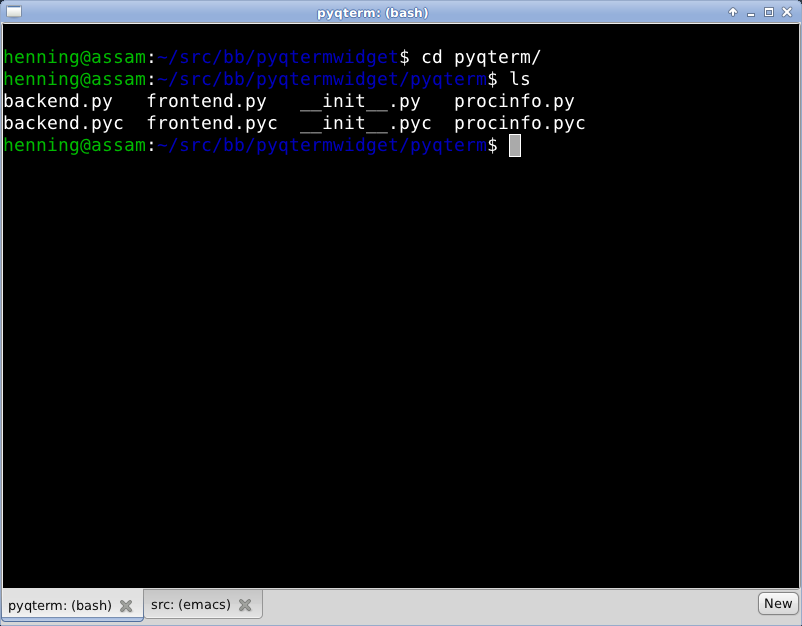Example¶
Here is a minimal example:
#!/usr/bin/env python3
# -*- coding: utf-8 -*-
from PyQt5.QtGui import QApplication
from pyqterm import TerminalWidget
if __name__ == "__main__":
app = QApplication(sys.argv)
win = TerminalWidget()
win.resize(800, 600)
win.show()
app.exec_()
Look at pyqterm-app.py for a more complete example with a tabbed terminal application.

The constructor has the following signature:
def __init__(self, parent=None, command=”/bin/bash”, font_name=”Monospace”, font_size=18)
The widget has the following methods:
execute(command=”/bin/bash”)
send(string)
stop()
pid() -> process id (int)
zoom_in()
zoom_out()
text_selection() -> string
update_screen()
is_alive() -> bool
row_count() -> int
column_count() -> int
text() -> string
TerminalWidget inherits directly from QWidget, so it has show, hide, setFont, etc.
The widget emits the following signals:
session_closed()
return_pressed()